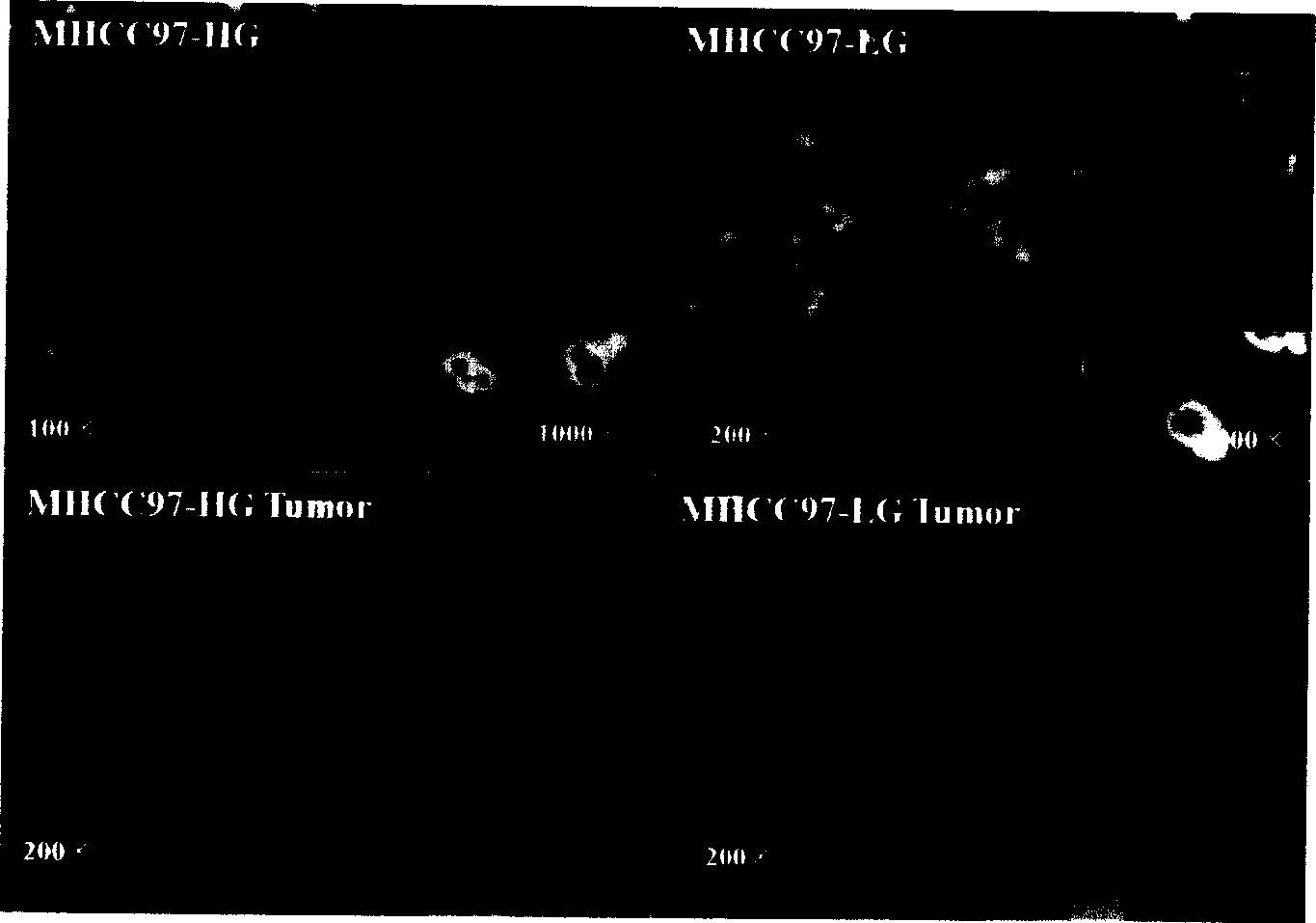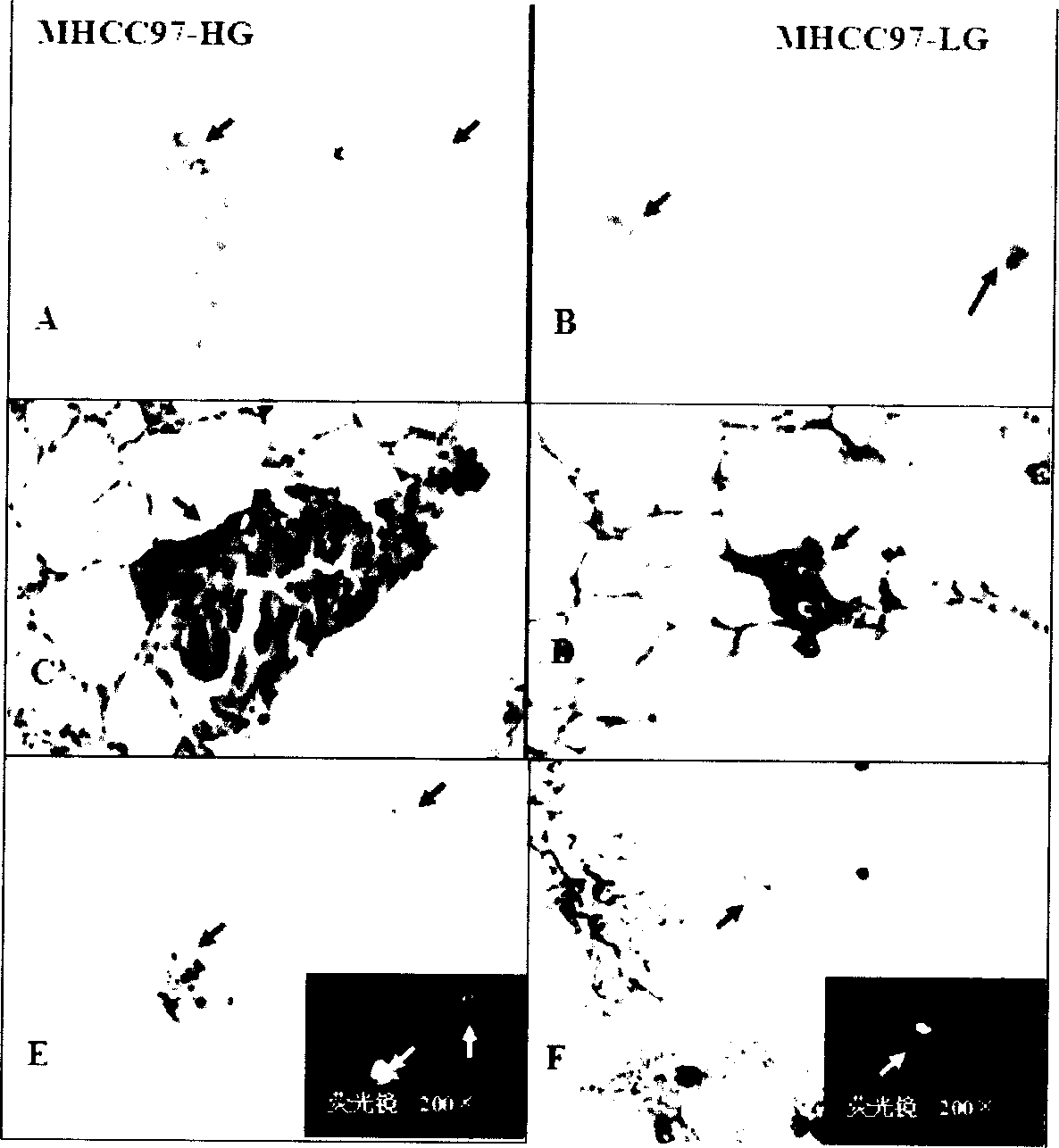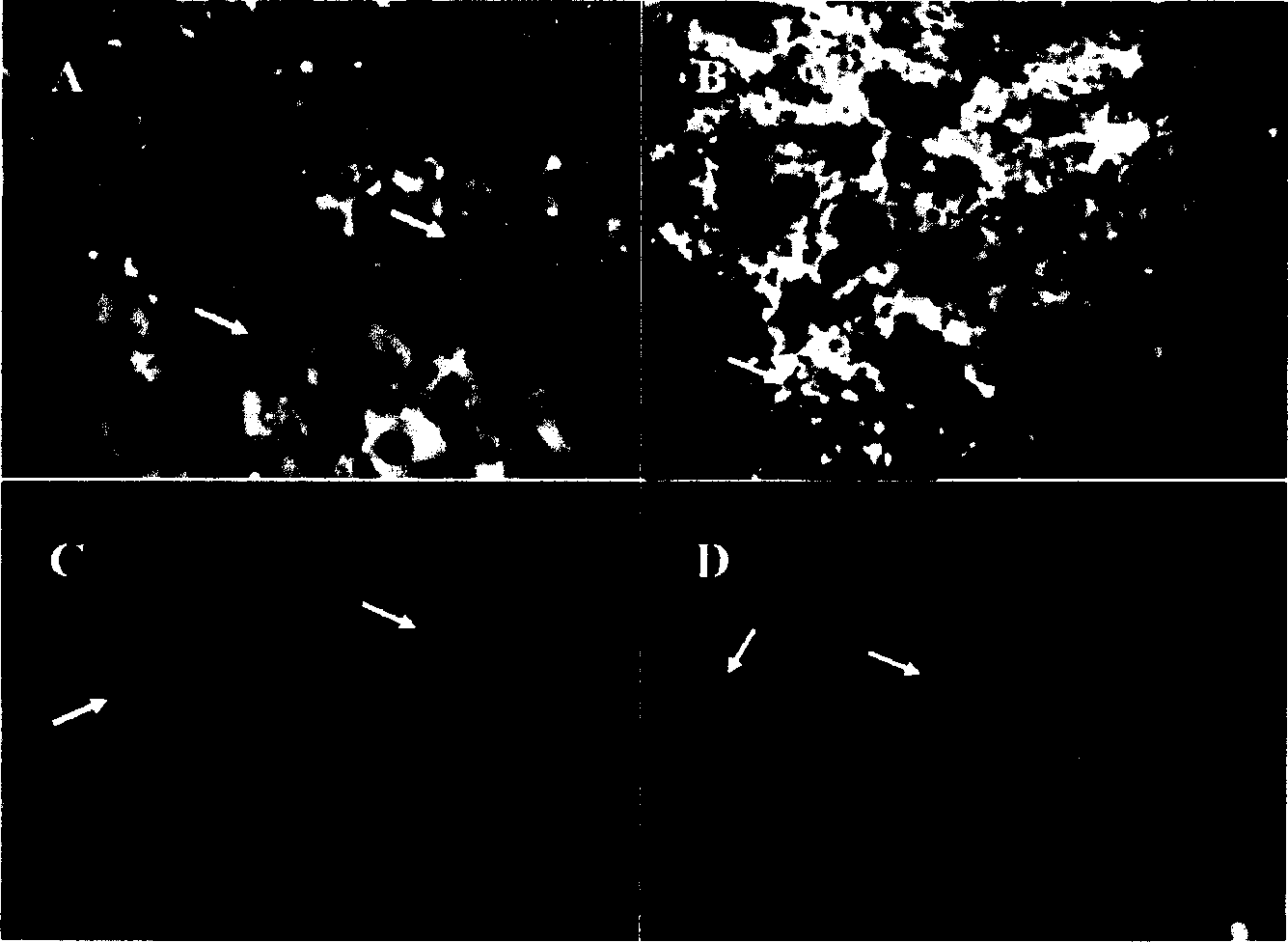Green fluorescent human liver cancer cell line capable of transfer
A human liver cancer cell line and green fluorescence technology, applied in the field of human liver cancer cell lines, can solve problems such as difficulty in effect, inability to observe tumor growth in real time, angiogenesis of recurrent and metastatic tumors, inability to early detect liver cancer recurrence, and tracking of metastases and metastases
- Summary
- Abstract
- Description
- Claims
- Application Information
AI Technical Summary
Problems solved by technology
Method used
Image
Examples
Embodiment 1
[0021] Establishment of human liver cancer cell lines with high green fluorescence and low metastases.
[0022] 1. MHCC97-H and MHCC97-L cells were divided into 3×10 5 Add cells / well to a six-well plate, add 2ml DMEM medium (GIBCOBRL, Grand Island, NY, USA) containing 10% FCS (Hyclone, Utah, USA) to each well, and incubate until the cells are 60-80% confluent;
[0023] 2. Replace 1ml of DMEM (plus 5% FCS) medium on the day of transfection, and incubate at 37°C for 1 hour;
[0024] 3. Prepare transfection solution: solution A: 1.5ug of pIRES2-EGFP (PT3267-5, ClontechLaboratories Inc., Palo Alto, CA, USA) plasmid DNA was diluted to 50ul (30ug / ml) / well with HBS buffer; Solution B: 6ul DOSPER (Cat.No.1811169, Roche Molecular Biochemicals, Germany) was diluted with HBS buffer to 50ul (120ug / ml) / well; mix A and B, shake gently, and incubate at 15-25°C for 15min ;
[0025] 4. Add the transfection solution drop by drop to each well, shake and mix well; incubate at 37°C for 6 hours;...
PUM
 Login to View More
Login to View More Abstract
Description
Claims
Application Information
 Login to View More
Login to View More - R&D Engineer
- R&D Manager
- IP Professional
- Industry Leading Data Capabilities
- Powerful AI technology
- Patent DNA Extraction
Browse by: Latest US Patents, China's latest patents, Technical Efficacy Thesaurus, Application Domain, Technology Topic, Popular Technical Reports.
© 2024 PatSnap. All rights reserved.Legal|Privacy policy|Modern Slavery Act Transparency Statement|Sitemap|About US| Contact US: help@patsnap.com










